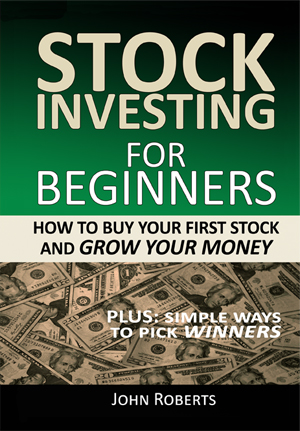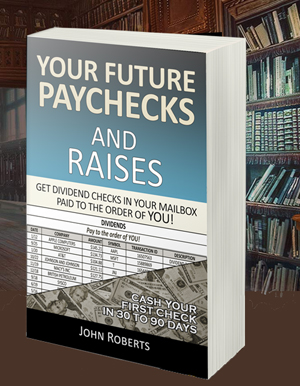Stock Based Investments
The following are investments within the scope of this book. They all have stocks at their core.
Remember that other types of investments may also fit your unique financial position, but a significant portion of them will probably be stock-based, which is why we focus on them.
Also, to cover every type of investment would be confusing and defeat the purpose of this book. I touch on other investments briefly in the final chapter of this section just for your personal edification, but they are not our focus here.
All that said, we start off with individual stocks.
Individual Stocks. These are the main investments you will focus on. Stocks are where you buy part ownership in a company. You’ll recall we mentioned earlier that you are a true business owner when you buy stocks.
This means you own a portion of the profits the company makes every year. If it is a dividend paying stock, they will pay you these profits in dividends deposited into your trading account. You will literally see your cash balance go up the day they do this. Or you can have them send you a check.
Either way you do it, it’s a pretty nice feeling.
Not all stocks pay dividends. They may reinvest the money to grow the business. That’s okay too. Because when the business grows, your stocks should eventually become worth more money. And that’s why we invest. That’s a good feeling too.
On average, stocks have increased about 8% a year over the long term.
Index Funds. In this case I mean specifically stock index funds. These are funds that invest in certain groups of stocks for your convenience. For example, maybe you think all of the stocks of the big corporations in the United States are going to go up over time. Maybe you would like to invest in the top 500 companies.
You could go out and buy shares of each of these five hundred companies individually. But that sounds like a lot of work — and commissions, come to think of it.
Or you could buy an index fund that has already done that for you. And they charge a very low fee. I’m warming up to that idea, aren’t you?
And nicer still, Index Funds trade just like stocks from your perspective. By that I mean, they have a symbol, and you can go out and buy them and sell them in seconds, just like you would a regular stock. One of the more widely known index funds like I just described is the S&P 500 index fund, symbol SPC, made up of the top 500 U. S. Corporations.
Exchange Traded Funds (ETF’s). I mean specifically stock based ETF’s here, as there are ETF’s that invest in other things as well. These are similar to index funds in that someone else packages up a bunch of stocks, saving you the trouble of having to go out and buy them all individually.
They also trade like stocks. By that I mean they have a symbol, and you can go out and buy and sell them immediately. So what’s the difference between ETF’s and Index funds?
For our purposes not much. In general, index funds seem to charge a lower fee. And there are a number of underlying technical differences involving reinvestment of dividends, taxation, etc. But for the most part, I trade them both as if they are the same type of stock-based investment.
A well known ETF, based on the top 500 companies in America, has a symbol of SPY. It is also referred to as the SPDR S&P 500 (Standard & Poor’s Depositary Receipt — that really helps—doesn’t it?). Some people call them spiders because of the abbreviation.
Stock Mutual Funds. Similar to ETF’s and index funds but with a couple of differences. Similar in that they are typically made up of a group of different stocks. Different in that they are actively managed every day, and so the management fee may be a bit higher.
After all, these people don’t come to work for free. Also, mutual funds don’t trade quite like a stock. They do have a symbol, but you can’t buy and sell them instantly.
Typically you have to put your order in to REDEEM them overnight. Also, many of them have a minimum you must invest, like $1000. You can’t buy just one share like you can stocks and the other funds mentioned above.
Master Limited Partnerships (MLP’s). Don’t let the name throw you. I have had great success with some of these and they fit my ownership definition. As a matter of fact, my fantastic investment in Mark West Energy I described earlier was an MLP.
For your purposes, MLP’s trade just like a stock. By that I mean they have a symbol, and you can buy and sell them in seconds – just like a stock.
But they can have really good dividends associated with them. Remember, I was (and still am) getting paid a 20% dividend on the Mark West Energy MLP.
How can they do this? Because they get special treatment from the government. The government will not tax them IF they distribute at least 90% of their dividends to the owners like you and me.
Many of these MLP’s are in the energy business. The government gives them this tax break to encourage energy production.
The symbol for Mark West is MWE. But don’t be disappointed when you check it out and it’s not paying 20% dividends today. It is paying me 20% because I bought it at $13 a share (making our earlier point that it’s important to keep some ready cash in your account so you can buy when deals like this come along). The price is considerably higher than that today, so the percent dividend is much lower.
You should also note that MLP’s are treated differently on your income tax with some fairly complicated rules. I let my tax man deal with that. And I’ve not seen any big bad tax effect using them. Certainly nothing that outweighs the returns I’ve made.
I really like MLP’s. I wish there were more of them.



